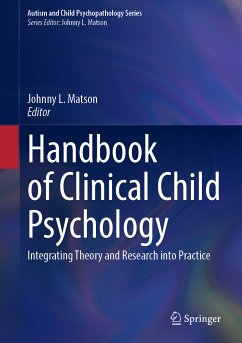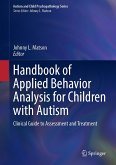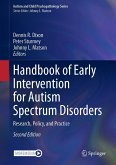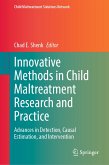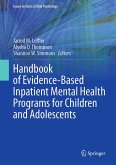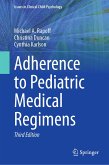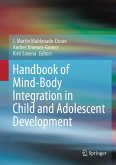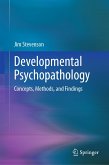This comprehensive handbook explores the many issues affecting children's physical and mental health. Its coverage spans a broad range of topics, exploring the history and foundations of clinical child psychology as well as the discipline's theories, research base, ethical and legal implications, and diagnostic systems, including the NIMH's Research Domain Criteria (RDoC). The handbook examines family risk factors for children (e.g., parental stress, divorce, and depression) and provides leading-edge reviews of cognitive variables (e.g., theories of memory, executive function, theories of intelligence, theory of mind and cognitive tempo). In addition, it describes methods of assessment, including checklists, interviews, and methods of treatment (e.g., cognitive behavior therapy, mindfulness, and family therapy). Chapters focus on assessment of specific diagnostic categories, such as depression, anxiety, selective mutism, ADHD, and pediatric topics, including chronic pain, childhood cancer, childhood obesity, and toilet training. Finally, the book addresses such emerging issues as gender diversity, social justice, cyberbullying, internet gaming disorder and the impact of COVID-19. The Handbook of Clinical Child Psychology is a must-have resource for researchers, professors, graduate students, clinicians, therapists, and professionals in clinical child and school psychology, child and adolescent psychiatry, social work, public health, pediatrics as well as special education, developmental psychology, nursing, and all interrelated disciplines.
Key areas of coverage include:
- Foundations of clinical child psychology.
- Cognition and clinical child psychology.
- Testing, assessment, and treatment methods in child psychology.
- Neurodevelopmental and pediatric disorders in childhood.
- Assessment and treatments for challenging behaviors in children.
- Assessment and treatments for psychopathologies in children.
Dieser Download kann aus rechtlichen Gründen nur mit Rechnungsadresse in A, B, BG, CY, CZ, D, DK, EW, E, FIN, F, GR, HR, H, IRL, I, LT, L, LR, M, NL, PL, P, R, S, SLO, SK ausgeliefert werden.
Es gelten unsere Allgemeinen Geschäftsbedingungen: www.buecher.de/agb
Impressum
www.buecher.de ist ein Internetauftritt der buecher.de internetstores GmbH
Geschäftsführung: Monica Sawhney | Roland Kölbl | Günter Hilger
Sitz der Gesellschaft: Batheyer Straße 115 - 117, 58099 Hagen
Postanschrift: Bürgermeister-Wegele-Str. 12, 86167 Augsburg
Amtsgericht Hagen HRB 13257
Steuernummer: 321/5800/1497
USt-IdNr: DE450055826
Bitte wählen Sie Ihr Anliegen aus.
Rechnungen
Retourenschein anfordern
Bestellstatus
Storno

